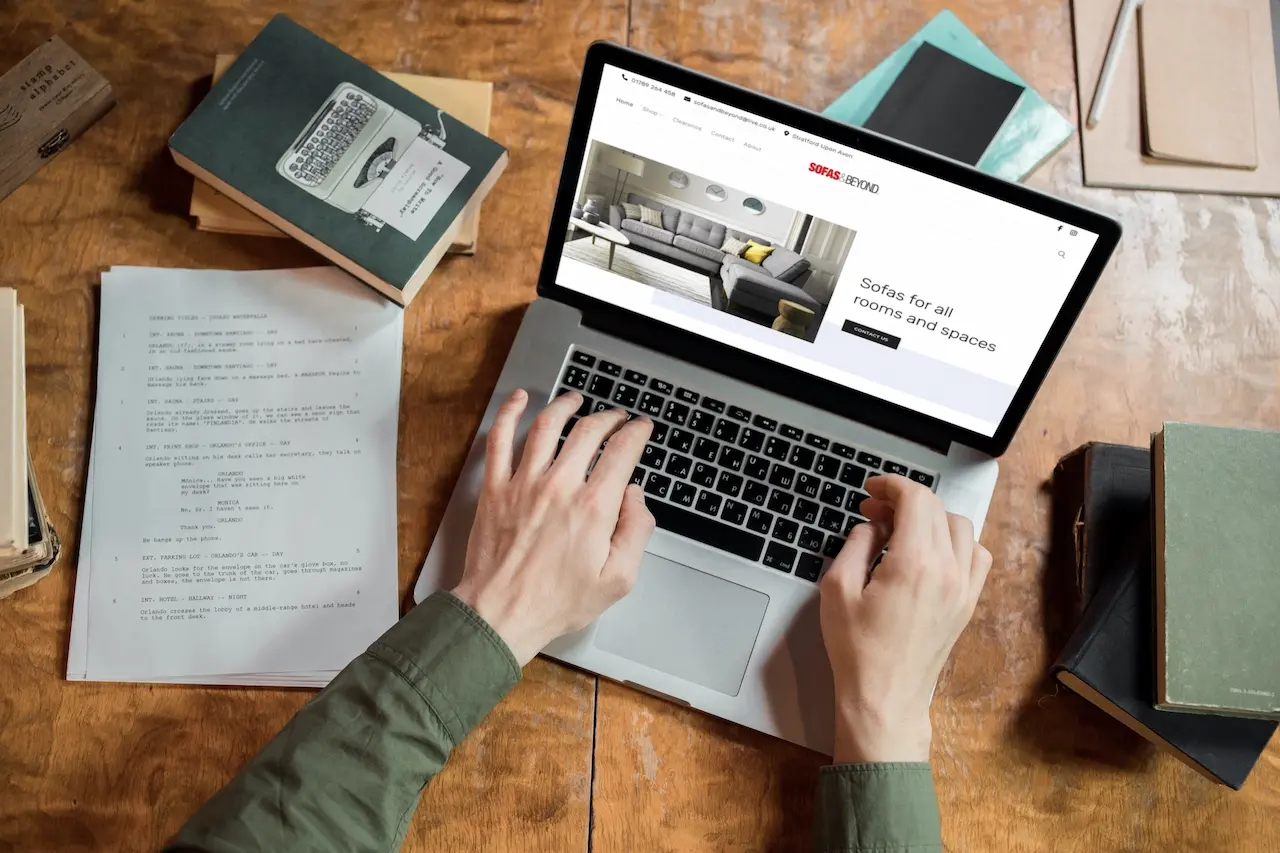
Estimated reading time: 4 minutes
Building a client website is no mean feat because it is essential to their business; getting it wrong can mean fewer visitors or sales. As a result, the delivery process is a significant factor in achieving client satisfaction.At SaneChoice, we follow an established process to ensure each website meets the brief. We are not saying our process is the best way or, in fact, the only way. But it might provide some guidance which you may choose to adopt.
Listen twice, speak once
The first thing SaneChoice do is understand the client’s business and what they want to achieve. Naturally, Web Designers are brimming with ideas, but if these ideas do not align with the client’s goals, it will cause unnecessary friction. When the requirements are clear, only then is it a good time to inject some of your expertise and experience to improve the design.
When designing the Sofas and Beyond website, we discussed the requirements with the owner over several days. We wanted to understand why the previous website was not working for the client and what they wanted to achieve in the future. This discussion was great ground-laying and helped the project become an overall success.
It’s not just about design
This one is something we live and die by. A client website must look great, but it must also function well. There is no point have a stunning website with hard-to-use navigation or a layout which is not intuitive. Never underestimate the sum of the parts, which is excellent websites are only excellent when both design and functionality rock.
We also want to add a few comments about security and performance, known as ‘non-functional requirements’ in project parlance. Most web developers think deeply about the design but don’t always consider these areas. For example, security is essential to ensure online transactions and keeping personal information safe. Likewise, slow performance can ruin a great website by creating a poor user experience. So, when creating a website, ensure you are also factoring in these critical areas.
Include the basics as standard
We think this aspect is essential when building a client website. Don’t make every feature a chargeable extra when creating web design packages.
Clients should not have to pay separately for solid security, good performance, or anything fundamental to the operation of a website. There is no point in creating a great design and then asking for extra money to make it work securely and performantly. Instead, build the costs of these must-haves into the design model and deliver them as part of the project. Again, your focus is on the design, and the client expects security and performance as part of the delivery.
Formalise the plan
It is essential to place what you will do in writing, so both parties are clear on the project’s outcomes. We recommend that you include as much detail as possible, leaving little room for ambiguity. The proposal should incorporate deliverables, time estimates, expectations and the overall cost. It would be prudent if you also considered a phased delivery approach to obtain acceptance at key milestones rather than at the end. Spending time setting the project up for success is a segway to success.
Provide a concept
Usually, the home page is the design that will continue throughout the website. Therefore, it is vital to spend time getting this right. Next, create some concepts which enable you to have an iterative discussion with your client on likes and dislikes. Some designers start with a piece of paper to make the initial concept. However, with all the modern tools available to web developers, it is just as easy to start digitally and evolve.
At the start of a project, we ask our clients which websites they like and why. This simple question helps articulate what the client is after in terms of design and functionality. It is far easier (and more effective) than simply asking the client to describe.
Build, but check-in regularly
Once you have an agreed design concept, you can progress to the inner pages. Here you will be building out the site with spaces for content. You will find that customers have a different view on the inner pages and can be pretty specific for About Us, Contact and any page that reflects their brand. As you build internal pages, periodically show your customer the progress for their feedback.
Provide go-live support
The chances of you building a client website, releasing it into production, and that being the last you hear of it are pretty slim! There will always be a few issues and some tweaks required once the website is live. We provide our customers with two weeks of High Care support where they can quickly get access to the development team in times of need. We have found this to be very reassuring to the client and something we now provide with every project.
